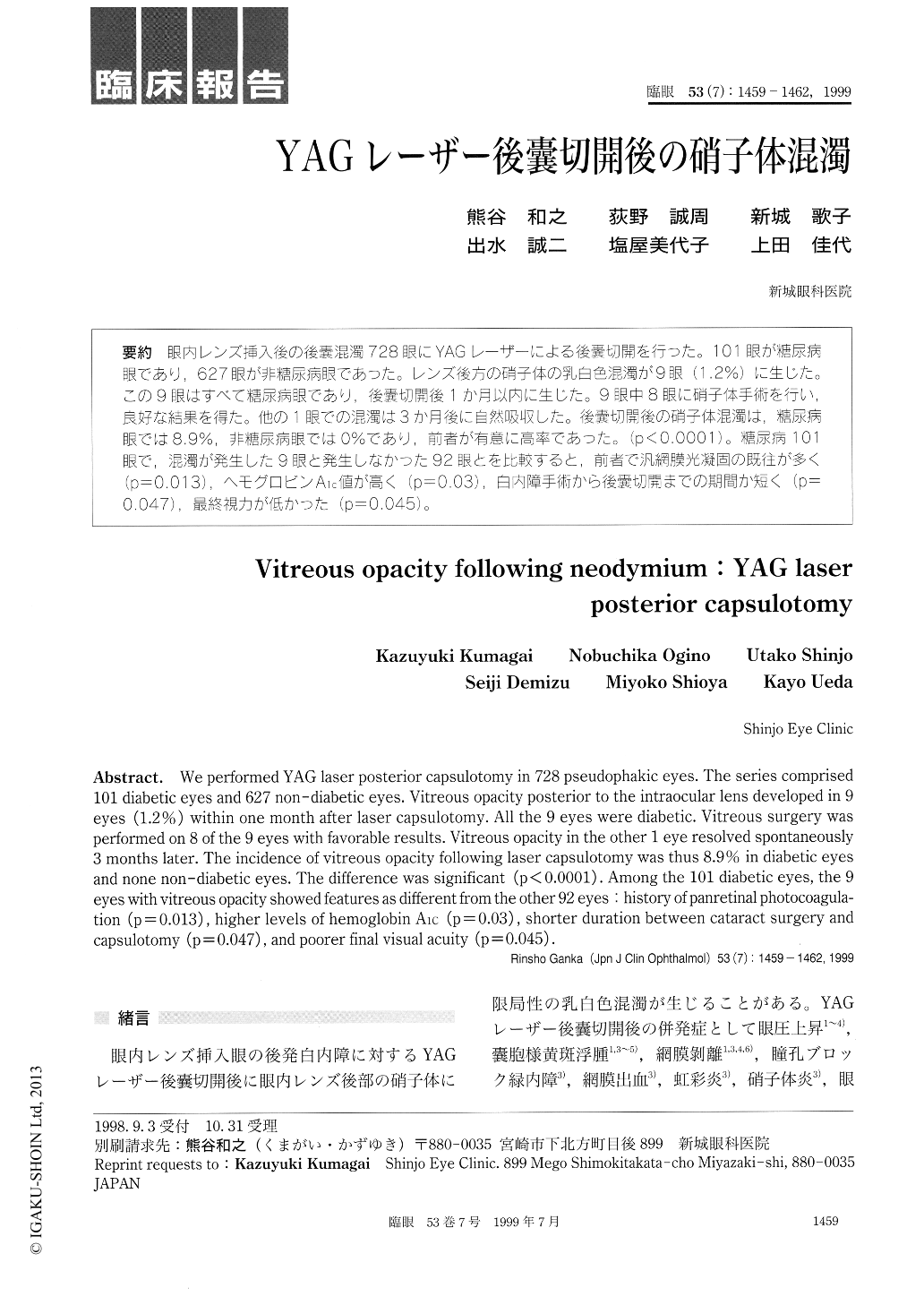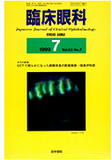Japanese
English
- 有料閲覧
- Abstract 文献概要
- 1ページ目 Look Inside
眼内レンズ挿入後の後嚢混濁728眼にYAGレーザーによる後嚢切開を行った。101眼が糖尿病眼であり,627眼が非糖尿病眼であった。レンズ後方の硝子体の乳白色混濁が9眼(1.2%)に生じた。この9眼はすべて糖尿病眼であり,後嚢切開後1か月以内に生じた。9眼中8眼に硝子体手術を行い,良好な結果を得た。他の1眼での混濁は3か月後に自然吸収した。後嚢切開後の硝子体混濁は,糖尿病眼では8.9%,非糖尿病眼では0%であり,前者が有意に高率であった。(p<0.0001)。糖尿病101眼で,混濁が発生した9眼と発生しなかった92眼とを比較すると,前者で汎網膜光凝固の既往が多く(p=0.013),ヘモグロビンA1c値が高く(p=0.03),白内障手術から後嚢切開までの期間か短く(p=0.047),最終視力が低かった(p=0.045)。
We performed YAG laser posterior capsulotomy in 728 pseudophakic eyes. The series comprised 101 diabetic eyes and 627 non-diabetic eyes. Vitreous opacity posterior to the intraocular lens developed in 9 eyes (1.2%) within one month after laser capsulotomy. All the 9 eyes were diabetic. Vitreous surgery was performed on 8 of the 9 eyes with favorable results. Vitreous opacity in the other 1 eye resolved spontaneously 3 months later. The incidence of vitreous opacity following laser capsulotomy was thus 8.9% in diabetic eyes and none non-diabetic eyes. The difference was significant (p<0.0001). Among the 101 diabetic eyes, the 9 eyes with vitreous opacity showed features as different from the other 92 eyes : history of panretinal photocoagula-tion (p=0.013), higher levels of hemoglobin Aic (p=0.03), shorter duration between cataract surgery and capsulotomy (p=0.047), and poorer final visual acuity (p=0.045).

Copyright © 1999, Igaku-Shoin Ltd. All rights reserved.


